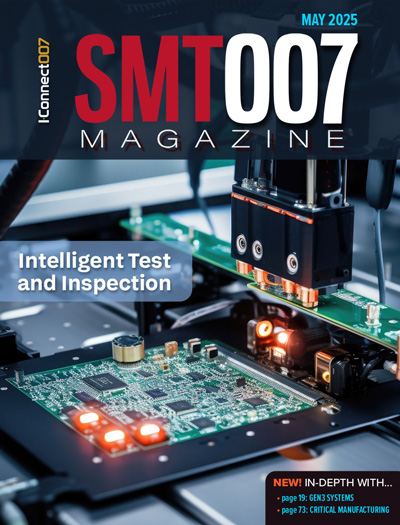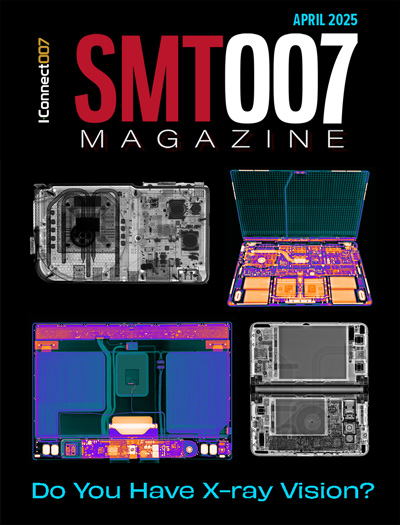-

- News
- Books
Featured Books
- smt007 Magazine
Latest Issues
Current Issue
Moving Forward With Confidence
In this issue, we focus on sales and quoting, workforce training, new IPC leadership in the U.S. and Canada, the effects of tariffs, CFX standards, and much more—all designed to provide perspective as you move through the cloud bank of today's shifting economic market.

Intelligent Test and Inspection
Are you ready to explore the cutting-edge advancements shaping the electronics manufacturing industry? The May 2025 issue of SMT007 Magazine is packed with insights, innovations, and expert perspectives that you won’t want to miss.

Do You Have X-ray Vision?
Has X-ray’s time finally come in electronics manufacturing? Join us in this issue of SMT007 Magazine, where we answer this question and others to bring more efficiency to your bottom line.
- Articles
- Columns
Search Console
- Links
- Media kit
||| MENU - smt007 Magazine
TIM: Thermal Interface Material in Power Electronics
June 2, 2021 | Jeff Brandman, Aismalibar North AmericaEstimated reading time: 1 minute
The omnipresent trend in power electronics for higher performance in smaller spaces requires a quick, effective, and cost-efficient heat transfer, within and out of, highly compact power modules. A well-designed, heat management concept from the beginning of a new design guarantees a longer lifetime of the electronic components and, by that, higher quality of the whole electronic power module.
In numerous electronic applications, especially in the field of power electronics, it is no longer sufficient to just transfer the heat generated by the electronic components to the ambient air via the printed circuit board. Instead, additional cooling of the components is required, which is achieved using an external, active, or passive cooled heat sink.
The metal housing of the application is quite often used to provide an additional cooling element for the power electronics. Therefore, protection against accidental shock because of dielectric breakdown is required as an additional safety precaution to guarantee personal protection.
TIM dielectric eliminates or minimizes air inclusions to enable efficient heat transfer from the heat source to the heat sink. An efficient solution for the thermal and insulation challenges in power electronics, both technically and commercially, can be found in an electrically insulating, heat-conducting dielectric layer such as the thermal conductive prepreg either in a typical B- or C-stage cured dielectric film.
The thermal conductive prepreg consists of a glass fiber base, enriched with mineral fillers. This thermal interface achieves a thermal conductivity of 2.2 W/mK with dielectric strengths greater than 4 kV (70 µm dielectric) or 6 kV (100 µm dielectric thickness). Utilizing a thin film thickness (70 or 100 µm), a low thermal resistance (Rth) of 0.315 or 0.45 Kcm2/W is achieved, which efficiently dissipates the heat generated by the power components to the attached cooling element for dissipation to the ambient air.
To read this entire article, which appeared in the May 2021 issue of SMT007 Magazine, click here.


